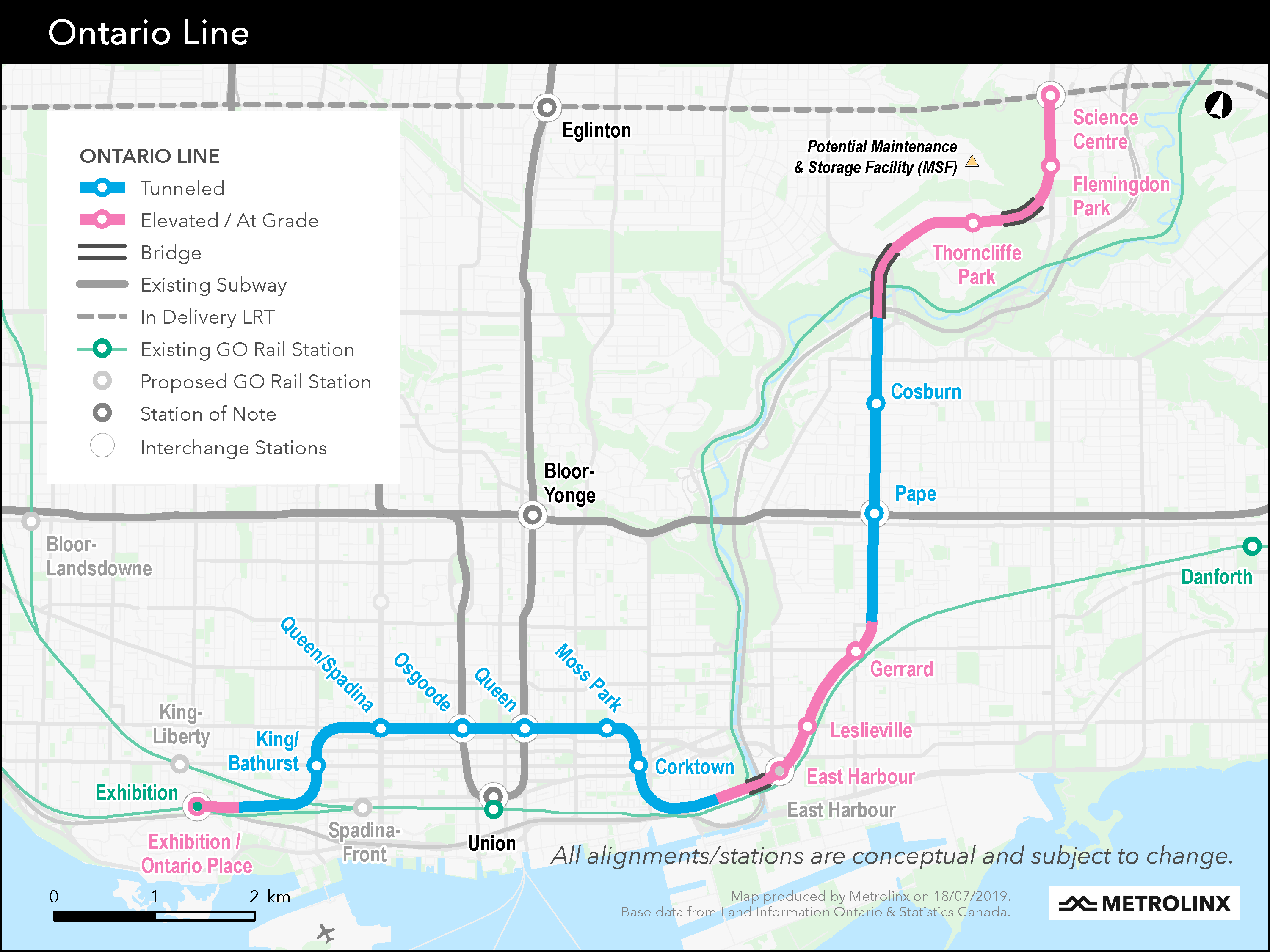Ontario Line subway Initial Business Case released to public
Toronto’s innovative new transit route will connect to GO as well as TTC subways and streetcars.
Jul 25, 2019
Metrolinx and Infrastructure Ontario have released the Initial Business Case for Ontario Line.
The report has found the new subway line will better connect people to where they want to go, and will also reduce travel times across Toronto.
“Toronto needs more than a subway, it needs a better transit network, and this is precisely what the new Ontario Line will deliver,” said Metrolinx President and CEO, Phil Verster.
“If you live in Thorncliffe Park, your commute to the heart of downtown will become 26 minutes – not 42 – freeing up more time for what is important to you.
“This is just one example of how our plan will provide stronger connections, a better travel experience, and make a real difference in people’s lives.”
Infrastructure Ontario President and CEO Ehren Cory said the Ontario Line will use a Public Private Partnership (P3) contractual structure.
“This is an incredible opportunity for local companies and those around the world to support a historic transit project leveraging our homegrown P3 delivery model,” said Cory.
“The Ontario Line and the other subway projects will also include many transit-oriented development opportunities. We will be actively engaging industry to share more details and gather input on how best to deliver this ambitious project.”
Earlier this spring, the Province of Ontario announced an historic $28.5-billion transportation vision that included Metrolinx and Infrastructure Ontario leading the way in building more subways for the region.
The Ontario Line is an approximately 16km free-standing subway, connecting Ontario Place/Exhibition through downtown Toronto to the Ontario Science Centre.
The line will better connect people to where they want to go, and reduce travel times across Toronto. It features 15 potential stations, including six interchange stations adding 17 new connections to GO Transit, existing subways and streetcars.
The Ontario Line Initial Business Case was developed with the intent to accelerate delivery of the new transit line, serve additional markets and reduce costs per kilometre while staying true to the plans developed by the City of Toronto, TTC and Metrolinx.
Some of the other benefits of the Ontario Line include:
Proven Modern Technology
- Fully automated, driverless trains with modern signalling that enables high frequency service
- Similar technology being used in Paris, London and Singapore
- Shorter trains and platforms approximately 100 metres in length
- Up to 6 km of the route to be elevated or at grade in existing rail corridors, isolated from traffic which helps to significantly lower the cost of the project.
Faster Commutes
- Up to 40 trains per hour, 90 seconds apart vs every two minutes, providing shorter wait times
- Travel time savings to Toronto neighbourhoods. For example:
- Thorncliffe Park to King & Bay: 26 minutes down from 42 minutes
More Connections
- 389,000 daily boardings
- 15 potential stations, including 6 interchange stations adding 17 new connections to GO Transit, existing subways and streetcars:
- Connecting to three GO lines (Lakeshore East & West, Stouffville)
- Four connections to Line 1, 2 and Line 5-Eglinton Crosstown
- 10 connections to King, Queen and Gerrard streetcars
- Providing 154,000 more people with walking distance access to rapid transit
- 53,000 more jobs accessible in 45 minutes or less for Toronto residents
Less Crowding
Reducing crowding by 14% on the busiest stretch of Line 1 as well as:
- 15% less crowding at Eglinton Station
- 17% less crowding at Bloor/Yonge Station
- 13% less crowding at Union Station
The team of experts behind the project are drawing on lessons learned from other projects internationally, using proven best practices and technologies, and from local projects, like the Eglinton Crosstown, which is moving ahead on time and on budget.
The team has also been sitting shoulder-to-shoulder with the City of Toronto and TTC, meeting more than 40 times already, learning from the work done on the Relief Line, and helping us move forward together at the pace required.
The Initial Business Case is the first stage of the evidence-based decision-making process. Our team will continue to refine their work to the next stage through the Business Case life cycle.
by Amanda Ferguson Metrolinx senior advisor media relations & issues
